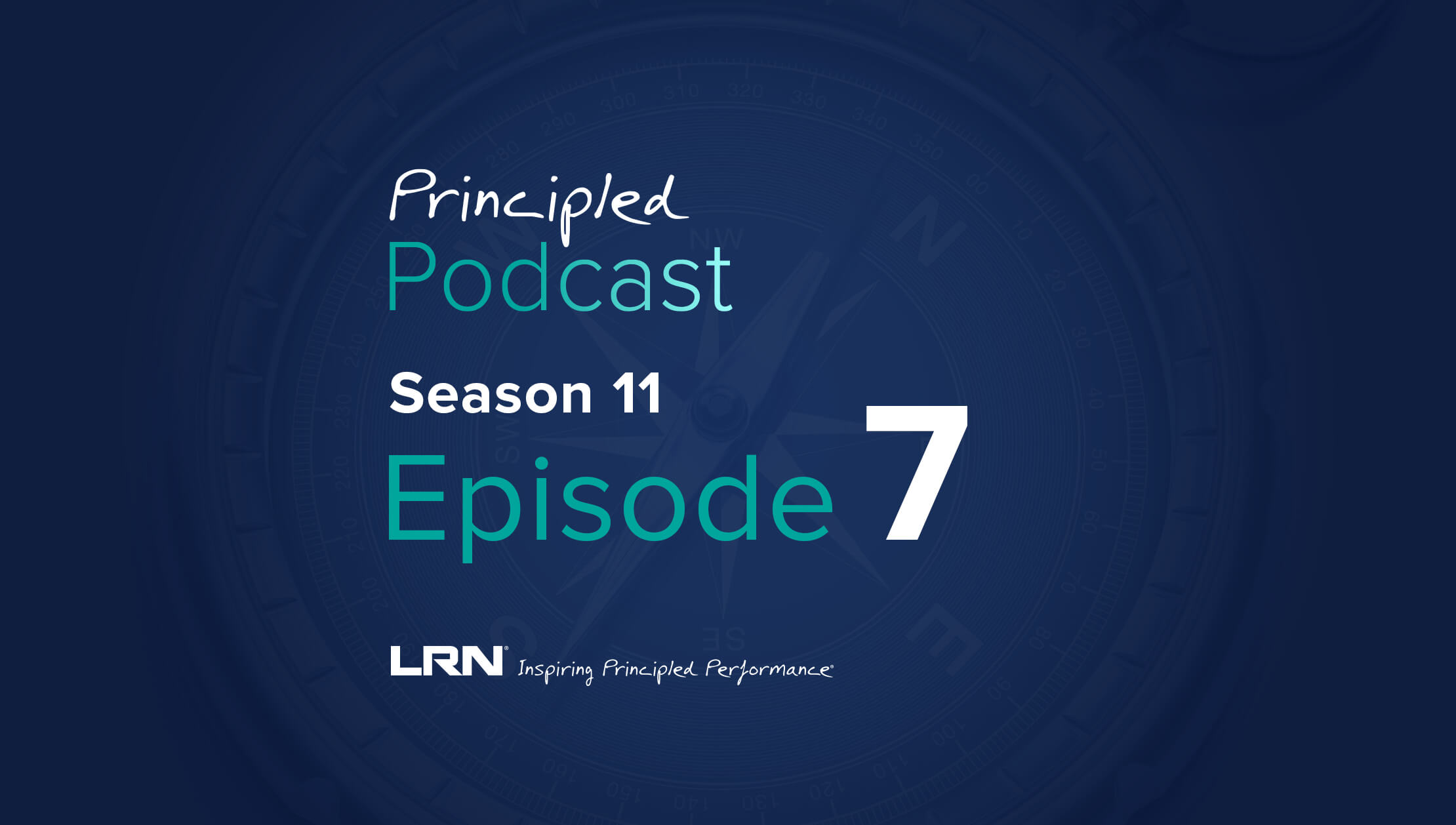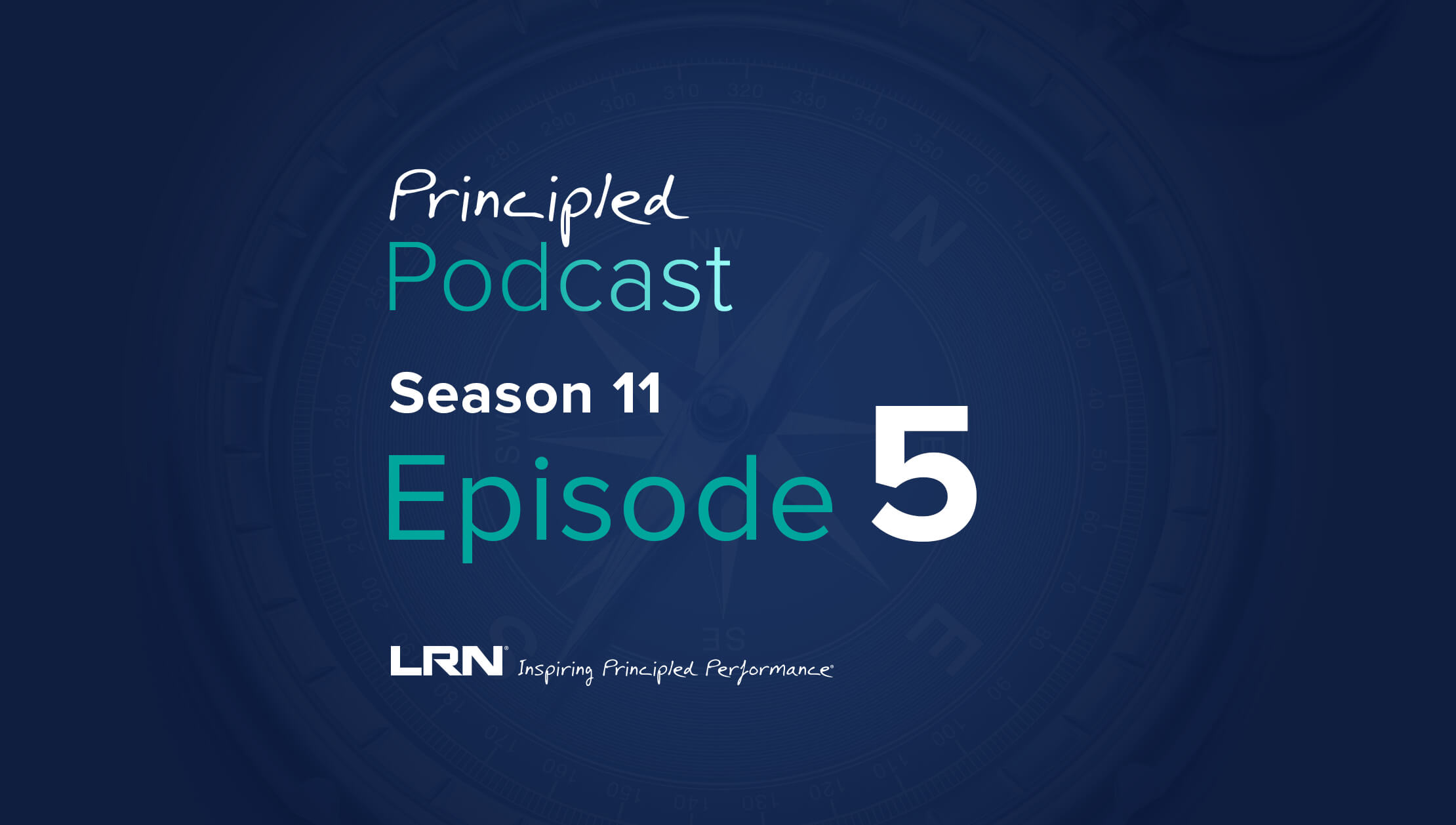The global marketplace has never been more complex, and the ethics and compliance function has never been more demanding. Chief compliance officers and E&C professionals face as challenging a task as any corporate executive around the world. Charged with keeping their companies out of trouble amidst a dynamic and sophisticated landscape of regulation, these leaders shoulder an immense burden in building a path to long-term corporate success. So, how are they communicating, training, and connecting with their employees—especially with much of the modern workforce operating remotely?
This was the focal talking point during the Consero panel “Recent Best Practices in Training a Modern Global Workforce.” The discussion was moderated by LRN Director of Thought Leadership and Best Practices Susan Divers and featured the following compliance leaders:
- Tyson Avery: SVP, Deputy General Counsel, and Chief Ethics & Compliance Officer at Starbucks
- Craig Huckelbridge: Senior Director of Legal Compliance & Litigation at Autodesk
- Terry Stringer: Head of the Ethics Office at HP Inc.
- John Troy: Chief Ethics & Sustainability Officer at GlobalFoundries
The panelists talked about how their compliance teams are getting creative with delivering E&C training and communications to improve employee engagement—especially with the size and scale of their organizations. Here are four best practices they shared on global compliance training.
Know your employee audience before developing compliance training
Panelists agreed that knowing your audience is key to developing effective compliance training. While Avery mentioned that Starbucks has a growing Gen Z employee base, Troy noted that GlobalFoundries has a significant population of older and longer-tenured employees—and Stringer said HP’s workforce has a wide spectrum of age and experience. Paying attention these types of demographics (among others) can help determine the content, format, and delivery of your compliance training so that it reaches and resonates with everyone.
Get senior leaders involved in global compliance training
Both Troy and Huckelbridge said that they include company leaders in their compliance training, which presents a great opportunity to get creative. Senior leaders can be featured in the training content itself, invited to participate in training sessions with employees, or speak at compliance-focused events like a company Ethics Week or coffee chat. The key, Troy and Huckelbridge noted, is to show that your E&C function has the buy-in from leadership—and that leaders understand the value the compliance brings to the wider company culture.
Look for collaboration opportunities with company-wide efforts
Avery was quick to state that any opportunity for the compliance function to jump on a wider corporate initiative is worth pursuing. As an example, he shared how Starbucks is in the midst of developing a mobile app for the entire company, which his team saw as a great change to make their compliance program more accessible. (In fact, LRN research shows that more and more companies are moving to mobile apps for their E&C programs.) The team is now working to get all E&C training and program elements into the larger development process.
Don’t be afraid to have a little fun
Stringer and Huckelbridge each spoke at length about the importance of employee engagement, especially with training. While being mindful of employees’ time matters—using test-out features or microlearning to keep courses short and to-the-point—it’s important to also be mindful of their attention and energy. The best way to capture that, the panelists said, was to have a little fun.
Stringer and her team leveraged graphics and gamification when developing online compliance training to make the material more interactive for learners. They also created “Compliance Rap” music videos, covering key topics in just a few minutes and using the power of rhyme to help employees commit material to memory.
When Autodesk moved to remote work for the pandemic, Huckelbridge and his team recognized that employees were combatting Zoom fatigue and an onslaught of online content. Rather than adding to the noise, they transformed their usual compliance training presentation into short trivia sessions and games where employees could compete in teams.
The key takeaway
Communicating, training, and connecting with a global workforce is no easy task, but there are ways to make it more engaging and effective. Understanding your employee base and adding some fun into the mix matter just as much as leadership buy-in and cross-functional collaboration. To learn more best practices in global compliance training, download a copy of the 2022 Ethics & Compliance Program Effectiveness Report.



